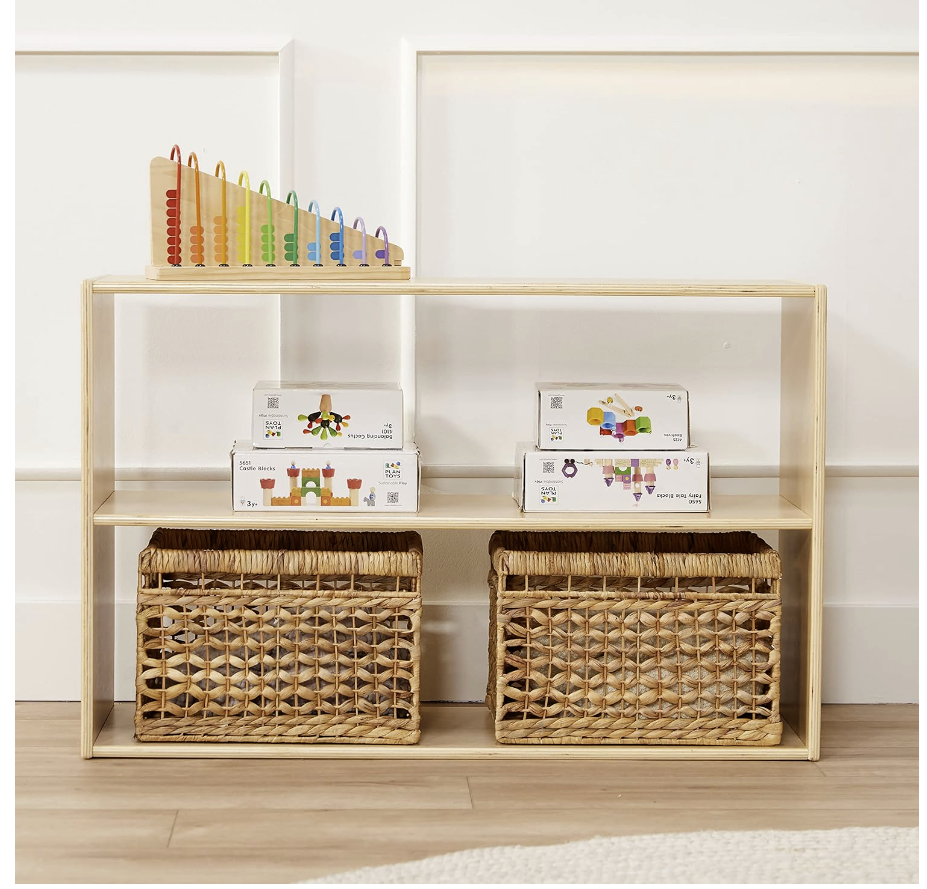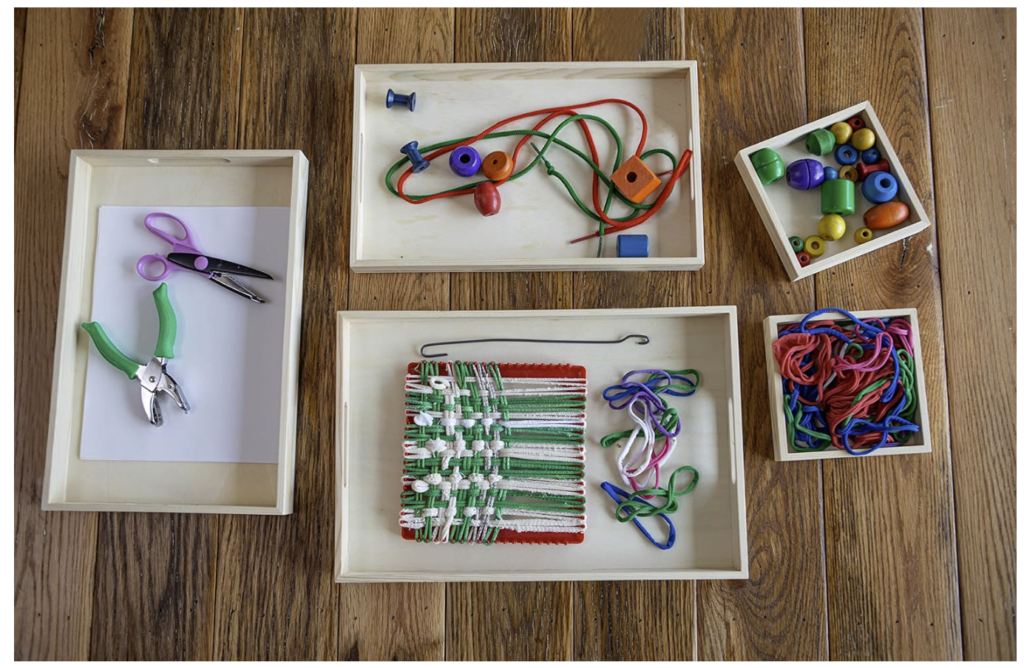
Embarking on the Montessori journey at home can be an enriching experience for both parents and children. The Montessori method, renowned for its emphasis on hands-on learning and independence, can be adapted to suit your child’s unique developmental stage, age, and your budget. Below, we’ll explore the basics of setting up Montessori learning at home, delve into developmental activities aligned with Montessori principles, understand the Montessori method of teaching in a home setting, and learn effective ways to plan Montessori activities.
Setting Up Montessori Learning at Home
Setting up a Montessori environment at home involves creating a space that encourages exploration, independence, and self-directed learning. Invest in wooden trays with handles (link) to organize and display activities in an accessible manner. These trays not only contribute to a tidy space but also facilitate easy transport of materials.
Also, consider incorporating the 2 Pieces Mini Ceramic Creamer Set (link) for pouring and transferring activities. These mini ceramic containers are not only functional but also aesthetically pleasing, aligning with the Montessori principle of cultivating an environment that values beauty and order. We’ve had ours for almost 7 years, and used them with both our children.
Developmental Activities in Montessori
Montessori emphasizes the importance of hands-on activities that align with a child’s natural development. For example, a Primary Shapes Template Set (link) can be an excellent addition to your Montessori toolkit. These templates help in refining fine motor skills, spatial awareness, and shape recognition. Incorporate these activities based on your child’s readiness, ensuring that they progress at their own pace.
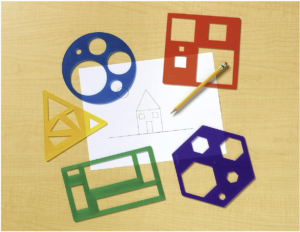
Explore Stepping Stones Indoor and Outdoor Balance Blocks (link) to enhance gross motor skills. These versatile blocks can be used both indoors and outdoors, providing opportunities for creative physical exploration.
Montessori Method of Teaching at Home
Keep up with the Montessori activities you’re introducing by incorporating a Dry-Erase Glass Board with Magnets (link). This board serves as a versatile tool to track developmental progress, record activity ideas, & create a shopping list for supplies also.
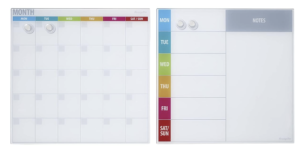
Arranging Montessori Activities
Thoughtful presentation is the key to successful Montessori activities at home. Opt for 2-Shelf Double-Sided Shelves (link) to organize materials and make them easily accessible to your child. These shelves provide ample space to display activities for various developmental stages, promoting a sense of order and independence.
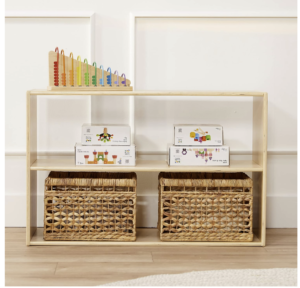
Consider your budget while planning activities. Many Montessori-inspired materials can be created at home using simple, cost-effective items. Look for DIY alternatives or repurpose everyday objects to align with the Montessori philosophy of simplicity and resourcefulness.
Remember, the heart of Montessori is not just the materials but the philosophy of nurturing a child’s natural curiosity and instilling a lifelong passion for learning. Understanding the Montessori method is crucial for successful implementation at home. It emphasizes respect for the child’s natural psychological development and encourages the child to learn through their senses.
In conclusion, embracing Montessori at home involves thoughtful consideration of your child’s age, developmental stage, and your budget. By investing in the right materials and creating an environment that fosters independence and curiosity, you can provide your child with a foundation for a lifelong love of learning. The journey might require some adjustments along the way, but the rewards in terms of your child’s growth and development are immeasurable.

